You may ask "Why bother with black and white travel photography?"
Fair question.
Life can appear so much more colorful when traveling outside your home country. This may be because some places and people are so much more vivid than where you live. Yet, it could be because when you travel you are stepping outside your familiar surroundings.
So much can be so different and seem much more interesting away from home. This in itself is a main reason many people tend to use their cameras more when they travel.
However, it’s often very easy to take photos that lack appeal to anyone other than ourselves when we’re on holiday. I want to share with you how you can avoid this.
Eliminating color from your travel images, or at least a portion of them, can change this. Concentrate on making a series of black and white travel photography. This can open up a whole other dimension of visual story telling.
People are generally used to seeing color photographs. In our modern internet society we take and share billions of pictures every day. Creating and sharing monochrome photographs will help capture the viewer’s attention.
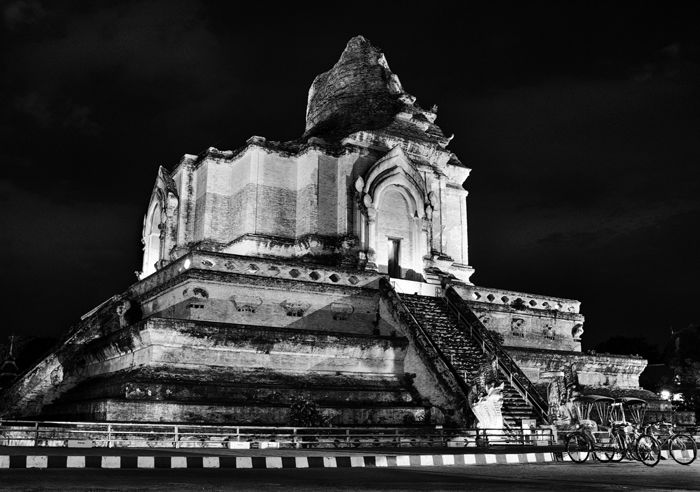
Chiang Mai’s much photographed Wat Chedi Luang at night in black and white.
Black and white photography can be so much more expressive. Thinking in shades of grey can help you focus more on capturing the mood and emotion of your travel stories.
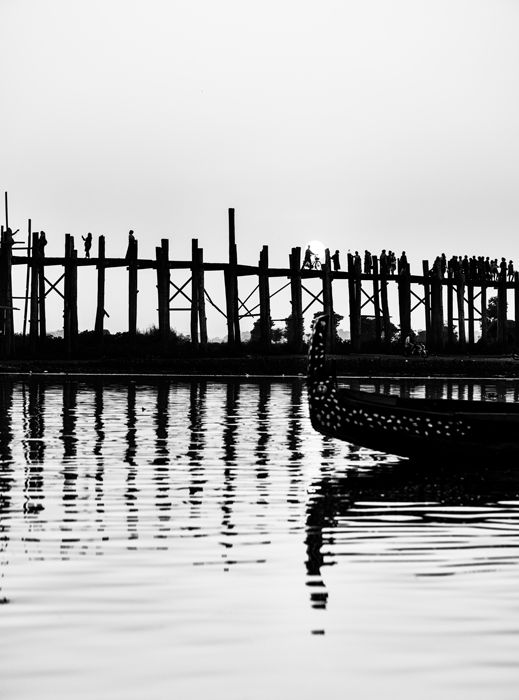
Even without the color of the setting sun, the silhouette and reflections of the U-Bein bridge in Myanmar make a strong travel picture.
Stripping away color leaves only tone. We see color because light waves vary in length. Removing the color leaves us a series of neutral tones, from black to white. This is often referred to as the greyscale.
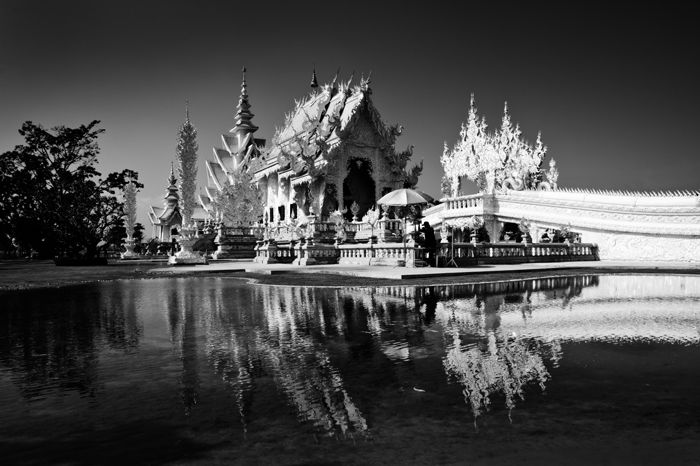
The White Temple in Chiang Rai, Thailand.
How do you stop seeing the colored light waves? Naturally we cannot, but we can set our cameras to show only a monochrome image on the monitor or in the viewfinder. Doing this is the best way to teach yourself to start seeing in black and white.
You will need to adjust your camera’s color mode setting. Different manufactures will call this setting by different names. A quick look at your camera manual or an internet search of your camera model will show you how to make this change. Some cameras may have multiple black and white setting options. You’ll need to experiment to find the ones you like most for different situations.
Cameras with electronic viewfinders will show a monochrome image in the eyepiece also. If your camera is a it has an optical viewfinder so you are seeing through the lens. You will need to use live view and compose using the camera’s monitor to see the images in black and white.
Using this technique is a good tool to help you get a feel for black and white photography. But don’t be lazy and rely only on your camera. Treat it like trainer wheels on a bicycle. Use the greyscale monitor view only as long as you need to.
Looking at a monochrome image on your camera monitor, you will notice how colors look in greyscale. Different colors with the same shade value will render different shades of grey. Different shades of the same color will render varying shades of grey.
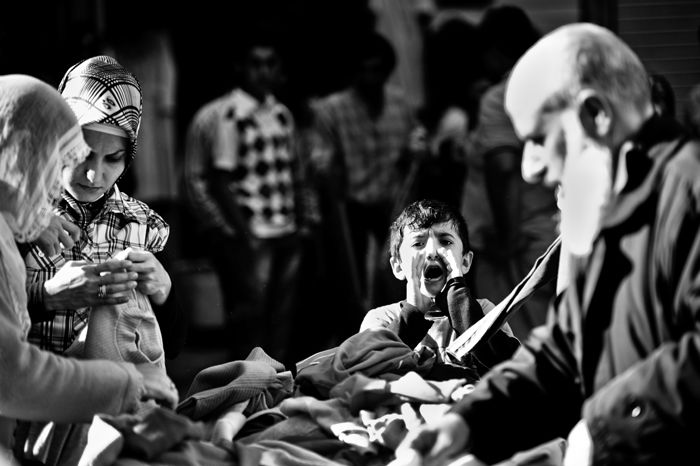
A young hawker in the streets of Istanbul.
Variation in tone is one of the key elements in a black and white photograph. The feel of a photo will differ depending on if there’s strong contrast or gentle gradation of greys.
The deep shadows of the harsh mid day sun create a moody contrast in my photo of the cow and pagodas.
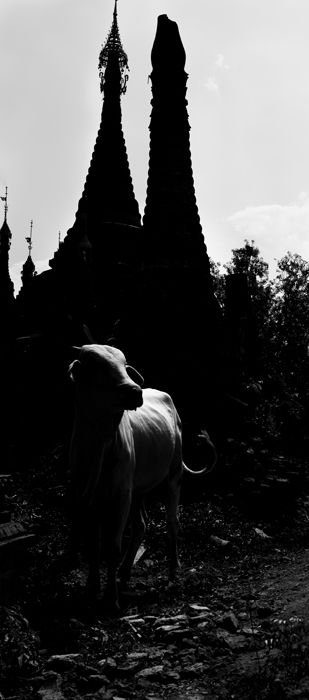
The soft light and tone range in the image of the Kayaw girl putting her hair up convey softness. The feeling these tones create resemble her expression and character.
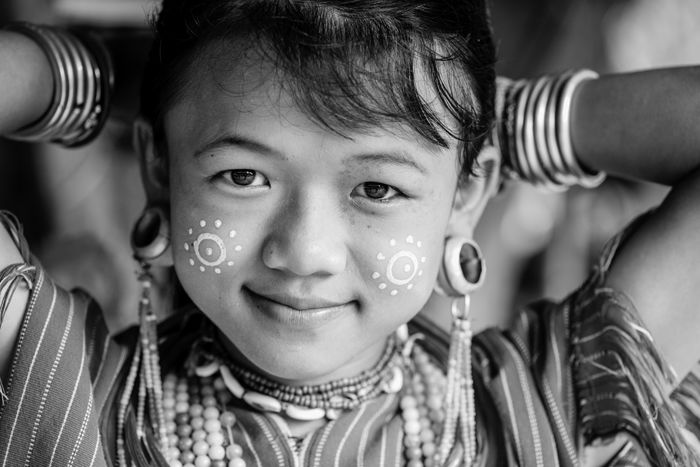
Black and white travel photography portrait of a young Kayaw girl putting her hair up
One of my favourite techniques for people photography is to use a darker background. The difference in the light on the young girl’s face and the light on the background isolates her. She is the center of attention in my composition because her face is lighter.
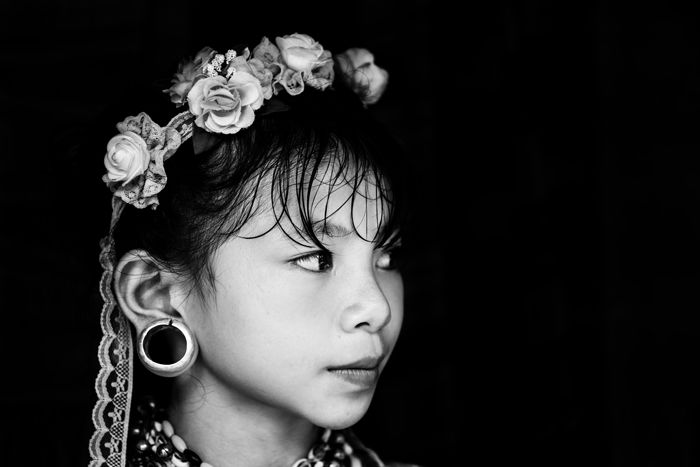
You may think this is only possible where the light is strong and the contrast extreme, but this is not so. The light on her face is soft. She sits in the shade and light is reflecting off the ground in front of her. Behind her is the wall of her house which has less light falling on it, so it appears significantly darker.
Where there is little or no contrast your composition may be better in color. The soft yellows and greens in this photo, along with the diffused light, produce a very flat black and white.
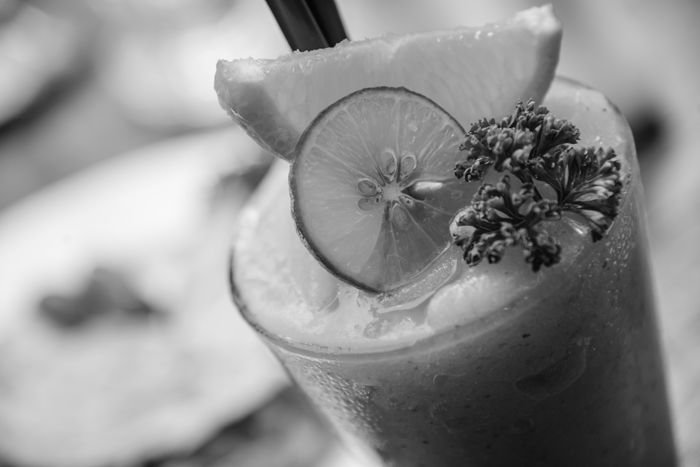

There are post processing options available to give us the ability to alter tone values. We could tweak the tonal values in the black and white version of this photo to make it more interesting. In this article though I am encouraging you to see what colors and tones will work best in monochrome.
Practice to see how various colors look in monochrome. Start a habit of noticing how different lighting affects shades of grey in your photos.
As you travel you are not always able to wait for the perfect light. High, mid-day sun can be challenging. Working in black and white can at times make the most of an otherwise difficult light.
Be aware of the variances of tone and light within your compositions. This will help you decide if it will look best in black and white or in color. Shape, form and texture within your composition will also affect this choice.
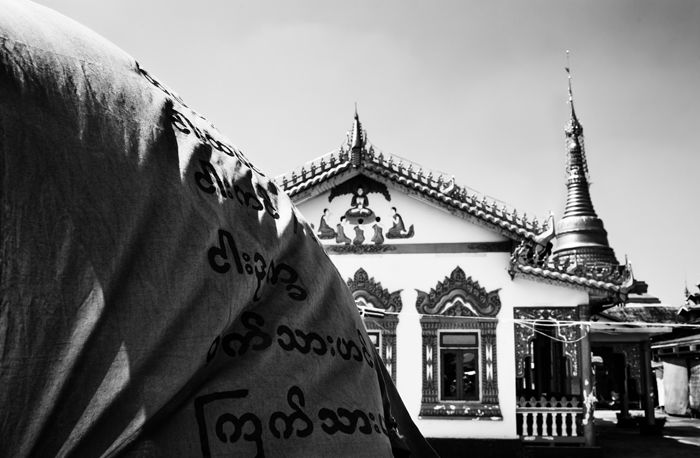
The interaction of shapes within your composition is important. Shapes of different colors, textures, or materials will reflect light in various ways. The relationship between them produces either a contrast or lack of it.
Look for adjacent elements in your compositions reflecting the light in different ways. Does this produce a pleasing contrast in tone? If so, it may look great as a monochrome photograph.
My photo of the flooded rice paddies demonstrates such a contrast. The water reflecting the sky and the low earth dykes contrast beautifully. The dark hills and cloudy sky together provide more drama in the image because of the tone variation.
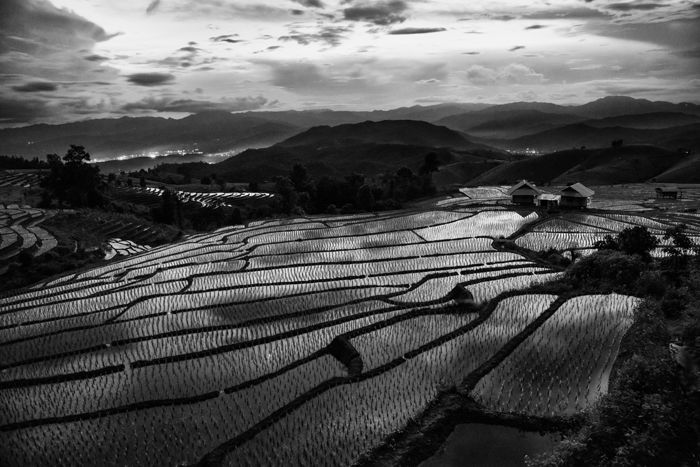
Sometimes the light itself will create interesting shapes and contrast. In this street portrait from Istanbul the light and shadow are the strongest design of the photo. The dark shadow behind the man and across his face create a rather abstract look. This works because of the contrast.
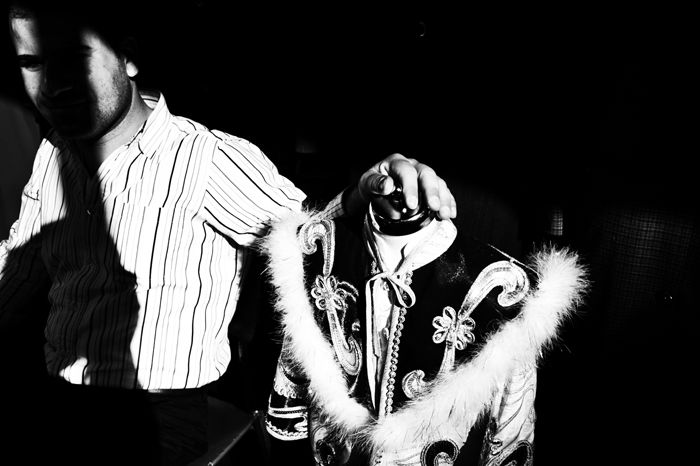
When there’s not so much contrast, but the shape and form attracts you, make your photo black and white. Smooth graduations in tone can emphasise shape with appealing style. Always keep in mind the emotion and impression you wish to convey with your photos. The interaction of tone and shapes and lighting will affect this.

As you travel from place to place with your camera, be aware of textures.
You can emphasise texture by setting your exposure for the brightest area of your image. I have used this technique in my photo of the durian fruits. Don’t worry if your camera is telling you the image is under exposed, you want it to be! This heightens the effect and drama.
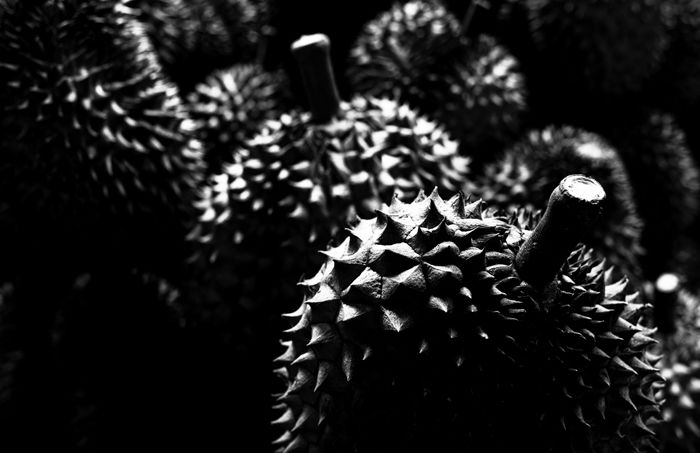
A cloudy sky can often take on a scraggy character. With a deep, rich blue behind the clouds the effect can be dramatic. This is again the result of careful exposure settings. If you can under expose the sky, the tone will deepen and contrast more with the clouds. In this black and white photo, the light color of the rocks helps keep the overall balance.
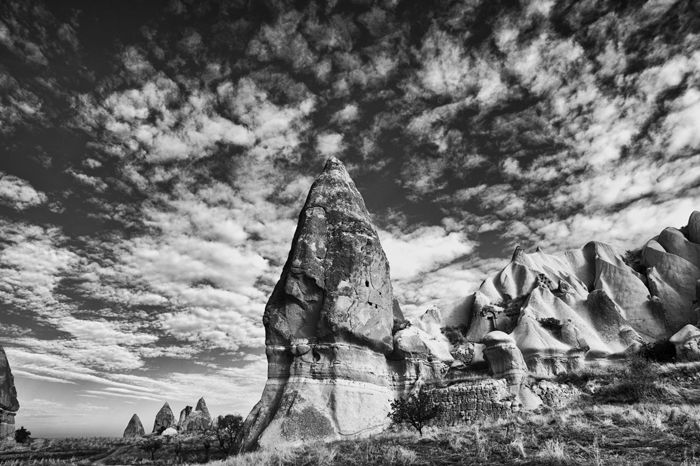
I like the mix of textures in this photo of my wife on Piha beach on New Zealand’s west coast. It is a rugged shore line and the sea is rough. As the water recedes over the sand it appears jagged. This texture complements her soft countenance. Using a flash I have maintained balance in my exposure on my wife and the background.
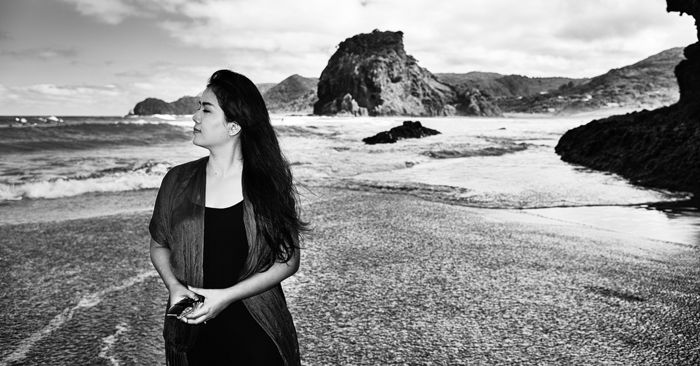
Each of these photos works well in color, the texture in each of them absolutely pops in monochrome.
Communicating with your subject is important to give meaning to your photographs. Equally so in color as it is in black and white photography. Photographs without color tend to convey this more apparently.
People will often muse that black and white photography conveys so much more emotion. The emotion you want to express is of your feeling when you were taking the photo. Revealing how you connected with your subject will make your black and white photography more compelling.
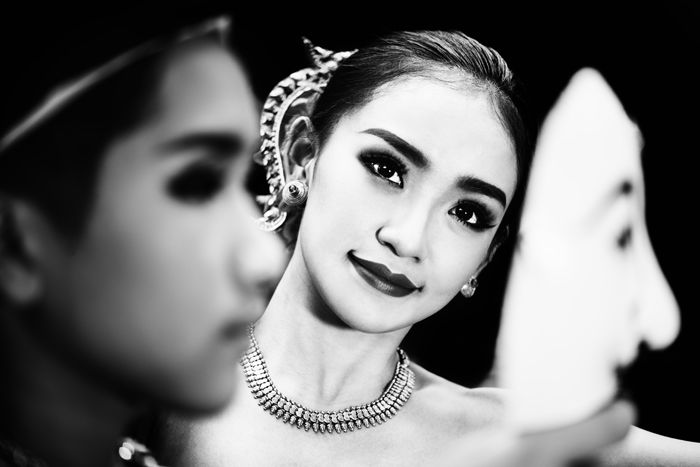
Finding yourself in a new place, in a strange culture, will heighten your emotions. This is an ideal time to connect and convey your feelings. As a traveller (rather than a tourist or a local) you will encounter situations that will move you. It may be an immense landscape, a historic ruin or an impoverished mother and her child. Express your feelings.
Developing the ability to represent your feelings in pictures will help define personal photographic style. This is not easy to do. It will not likely come about during your next trip. The subject is seldom written about. It would make an interesting book or video series.
Martin Parr does it splendidly in color. Lee Jefferies does it superbly in black and white. Most of us struggle to do it in a lifetime of picture taking.
Purposefully choosing to photograph in black and white can help us communicate. Not only communicate visually, but also emotionally. But before we can do this, we must first connect.
When traveling to places where we do not know the language we have more limited means of communication. Black and white photography limits what we can show in our photos. Both of these limitations can be advantageous.
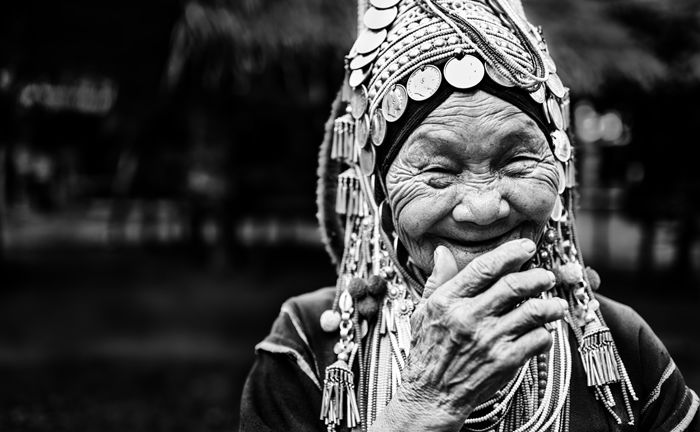
A smile at someone and a nod towards the camera in your hand may gain you permission to take a stranger’s photo. Speaking to them, if you have a common language, may entail questions and a negative response.
Relying solely on grey tones can simplify your images and strengthen their sense of feeling.
As you begin your next journey, or continue the one you are currently enjoying, aim to tell your story. Tell your story with compelling black and white photography.
Taking snap shots of interesting things is easy when you are traveling. To create more appealing black and white photography use your camera mindfully. Think about the light and shade. Consider texture and tone. Watch what the light is doing. Compose well and time your photographs to make the most of your experience.
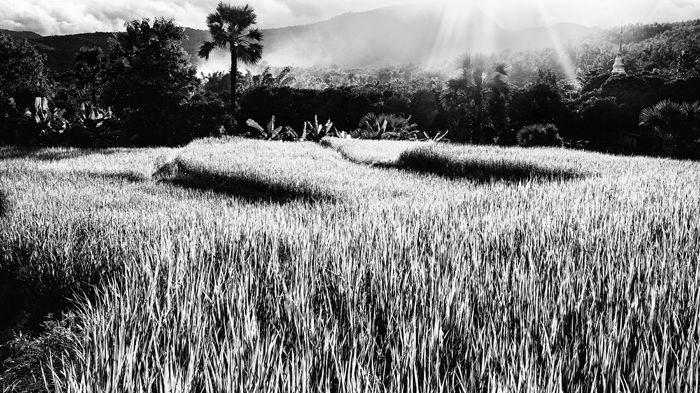
Dramatic texture of rice fields in the evening in northern Thailand.